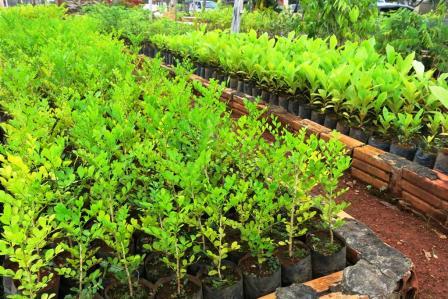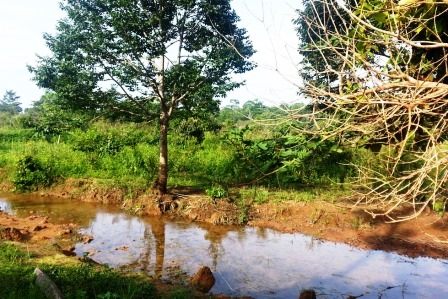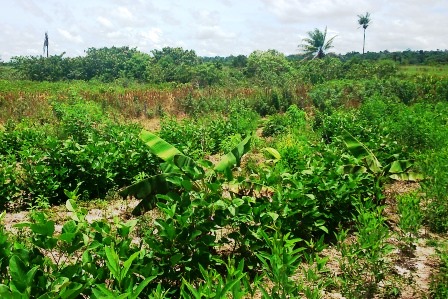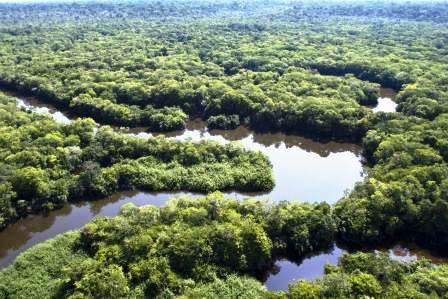CONTEXTUALIZATION
In 2012, through Decree No. 7,747/2012, the National Policy for Environmental and Territorial Management of Indigenous Lands (PNGATI) was established. Its objective is “to guarantee and promote the protection, recovery, conservation, and sustainable use of natural resources in Indigenous lands and territories, ensuring the integrity of Indigenous heritage, the improvement of quality of life, and the full conditions for the physical and cultural reproduction of current and future generations of Indigenous peoples, while respecting their sociocultural autonomy.”
By promoting Indigenous peoples' self-management of their territories, this policy serves as a mobilizing instrument that enables Indigenous communities, through their representative organizations, to act effectively in defending their lands and rights and in addressing their most pressing needs.
This project was developed in collaboration with Associação Wyty Catë, an organization that represents and coordinates Timbira communities in Maranhão and Tocantins, and the Guarani Yvyrupa Commission, the representative body of the Guarani peoples of Southern and Southeastern Brazil.
The proposal reflects strategies identified as priorities by the Timbira peoples and organizations for adapting to the impacts of climate change, preserving their territories, and improving community health conditions. It also supports territorial and environmental monitoring and protection tools and actions in Guarani Indigenous lands, while promoting the appreciation of their knowledge, perspectives, and strategies aimed at reducing deforestation and conserving the Atlantic Forest biome.
THE PROJECT
The project is structured into two components.
The first component is led by the Timbira peoples, in Indigenous lands located in the states of Maranhão and Tocantins. It was developed based on a participatory survey on climate change, health impacts among the Timbira, and adaptation strategies, carried out by CTI in partnership with the Associação Wyty Catë of the Timbira Communities of Maranhão and Tocantins during the COVID-19 pandemic. The survey highlighted the link between worsening epidemiological conditions and historical territorial pressures, which have been intensified by climate change.
To address these challenges, the project will support the strengthening of the five Base Centers and the 12 Indigenous Primary Health Units (UBSI) that serve the Timbira communities. Actions include improvements in operational infrastructure, training processes on traditional Timbira medicine, support campaigns for vaccination strategies at the Base Centers, among others. A Timbira Health Education Program will also be implemented, featuring workshops for intergenerational transmission of preventive and healing practices, as well as dialogues on alcoholism, mental health, and the prevention and control of high-incidence diseases.
As part of climate change adaptation strategies, the project will support three planting cycles using agroecological practices for traditional food cultivation in communal fields and home gardens, as well as the creation of traditional medicinal plant gardens. Irrigation systems will be installed in five villages with high vulnerability in terms of food and nutrition security. Additionally, semi-artesian wells will be drilled and household water supply systems implemented in 15 villages facing acute water scarcity. The component also supports the strengthening of Indigenous organizations and traditional governance structures to ensure their participation in agendas related to territorial protection and Indigenous health promotion.
The second component involves the Guarani Mbya peoples, across 19 Indigenous lands in the Vale do Ribeira region (São Paulo) and the coast of Paraná, within the Iguape–Cananéia–Paranaguá Estuarine-Lagoon Complex, home to some of the most well-preserved stretches of Atlantic Forest. In line with Axis 1 of PNGATI — focused on territorial and natural resource protection —, the project adopts a strategy that combines non-Indigenous systems and tools with traditional Guarani knowledge and practices for territorial monitoring and protection.
The project will update and enhance the Guarani Digital Map, a collaborative and interactive platform used by communities and the Guarani Yvyrupa Commission to systematize and share territorial information through georeferenced data over aerial imagery. In addition to platform improvements, workshops will be held to train Guarani communities in its use and data input.
The project also includes multiple training sessions on territorial monitoring and protection, and four capacity-building modules for 12 Indigenous Guarani researchers, who will conduct studies on the Guarani relationship with the Atlantic Forest from their own cultural perspective. Finally, the component includes territorial and environmental protection actions, carried out through two approaches: one focused on intercultural experiences and practices, and another grounded in traditional initiatives — understood as essential actions, according to Guarani cultural frameworks, for ensuring the territorial, environmental, and cosmological integrity of their lands.
INTERVENTION LOGIC
The project is part of the “Land-use Planning” (3) components of the Logical Framework of the Amazon Fund. The expected direct effect, as defined in this Logical Framework, was as follows: “protected areas with infrastructure, territorial protection and consolidated management" (3.2) as a result of the support for strengthening health initiatives among the Timbira peoples and ensuring the integrity of their territories, as well as the support for territorial protection and natural resource management in Guarani Mbyá Indigenous lands within the Atlantic Forest biome.







